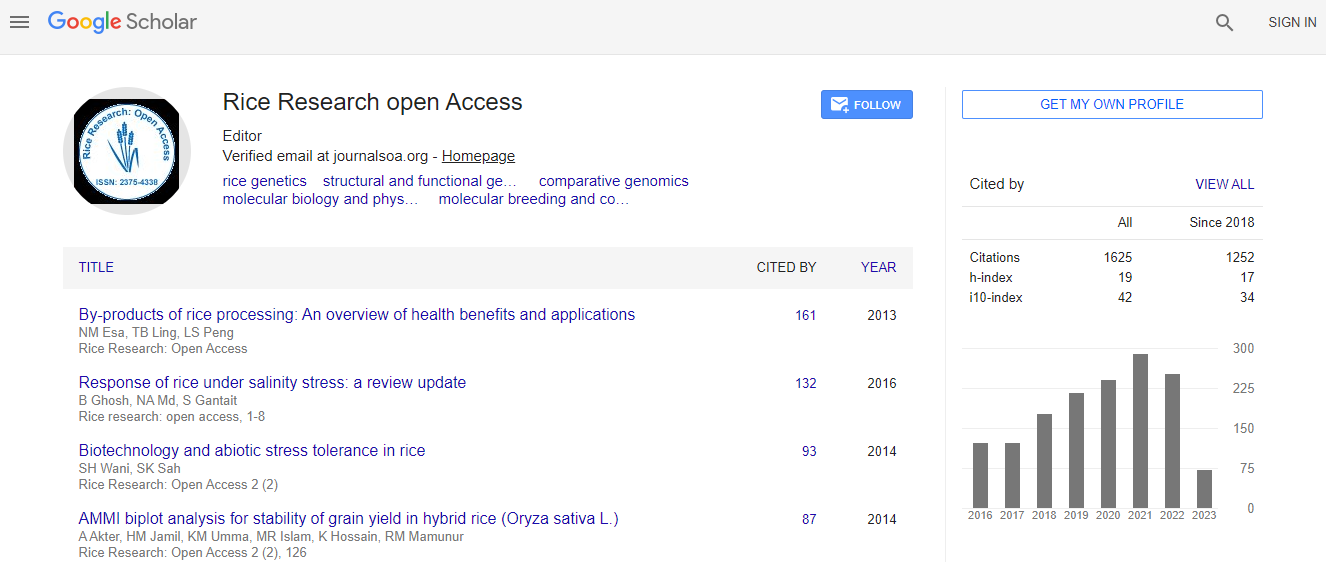Research Article
Domestication and Long-Distance Dissemination of Rice: A Revised Version
| Hiroshi Ikehashi* | ||
| Ex. Prof. Kyoto University, Fujisawa city, Japan | ||
| Corresponding Author : | Hiroshi Ikehashi Ex. Prof. Kyoto University Kataseyama 3-10-6, Fujisawa city Japan, 251-0033 Tel: +81-0466-28-9850 E-mail: hiro-i@feel.ocn.ne.jp |
|
| Received November 16, 2014; Accepted November 26, 2014; Published November 30, 2014 | ||
| Citation: Ikehashi H (2014) Domestication and Long-Distance Dissemination of Rice: A Revised Version. J Rice Res 3:128. doi: 10.4172/2375-4338.1000128 | ||
| Copyright: ©2014 Ikehashi H. This is an open-access article distributed under the terms of the Creative Commons Attribution License, which permits unrestricted use, distribution, and reproduction in any medium, provided the original author and source are credited. | ||
Related article at Pubmed Pubmed  Scholar Google Scholar Google |
||
Abstract
Historically, in 1930s two sub-species, indica and japonica, were proposed on the basis of sterility in F1 hybrids between them. Subsequently, the two types were classified by associations of a number of genetically independent traits. The characteristic associations of traits have been explained by a series of hybrid sterility or reproductive barriers, in which a duplicate recessive gene model was proposed to cause varietal differentiation. In 1990s, most of hybrid sterility genes were proved to be caused by an interaction of allelic genes at each locus. In a well-known case of hybrid sterility, the indica, japonica, and wide-compatibility type which gives fertile hybrids in its cross to indica and japonica type, are proved to contain an allele, S5-i, S5-j and S5-n, respectively at a locus on Chromosome 6. Those gametes having S5-j allele is found to be partially aborted in the hybrid genotypes of S5-i/ S5-j while no gamete abortion occurred in S5-i/S5-n and S5-j/S5-n genotype. Since then, the S5-n has been used in hybrid rice breeding to obtain fertile and vigorous hybrids between indica and japonica types. For the last decade the action of S5-n is found to be due to a deletion in its gene sequence, while functional enzymes are produced by other alleles. Thus, the earlier assumed role of hybrid sterility genes as to lead to varietal differentiation are no more supported. Today, the characteristic association of traits found in each of varietal groups is better explained by founder effects. Recently , genetic analyses have been advanced for the contrasting traits between indica and japonica group. For an instance, genetic bases for long slender grain of indica and short wide grain of japonica are analyzed, and the short wide type is found to be caused by a deletion in its gene sequence. Thus, the short wide grain is considered to be mutational origin during domestication. On the other hand, a large number of native cultivars of rice were surveyed with enzyme polymorphism in 1980s, and later with molecular markers. As the results, profound genetic diversity is found in the genetic background of rice and wild rice. As the results, some scientist proposed the idea of multiple independent domestications of rice. However, before reaching to such a conclusion, at least two factors, i.e., long-distance-dissemination of some genotypes and possibilities of introgression by local wild rice to primitive cultivars need to be examined. Taking the two factors as well as historical events into consideration, the author considered that perennial japonica cultivars were first domesticated in Changjiang river basin, and disseminated to East India through Assam or along Bengal Bay, meanwhile their genetic background were transformed under introgressions of local wild rice which resulted to form the indica types. Thus–formed indica types seem to be disseminated to Southeast Asia, for an instance to Champa, under the expansion of Hinduism. Later some of the genotypes were introduced into China. Recently, this explanation has been verified by extensive analyses of gene sequence for wild and cultivated rice.

 Spanish
Spanish  Chinese
Chinese  Russian
Russian  German
German  French
French  Japanese
Japanese  Portuguese
Portuguese  Hindi
Hindi 
